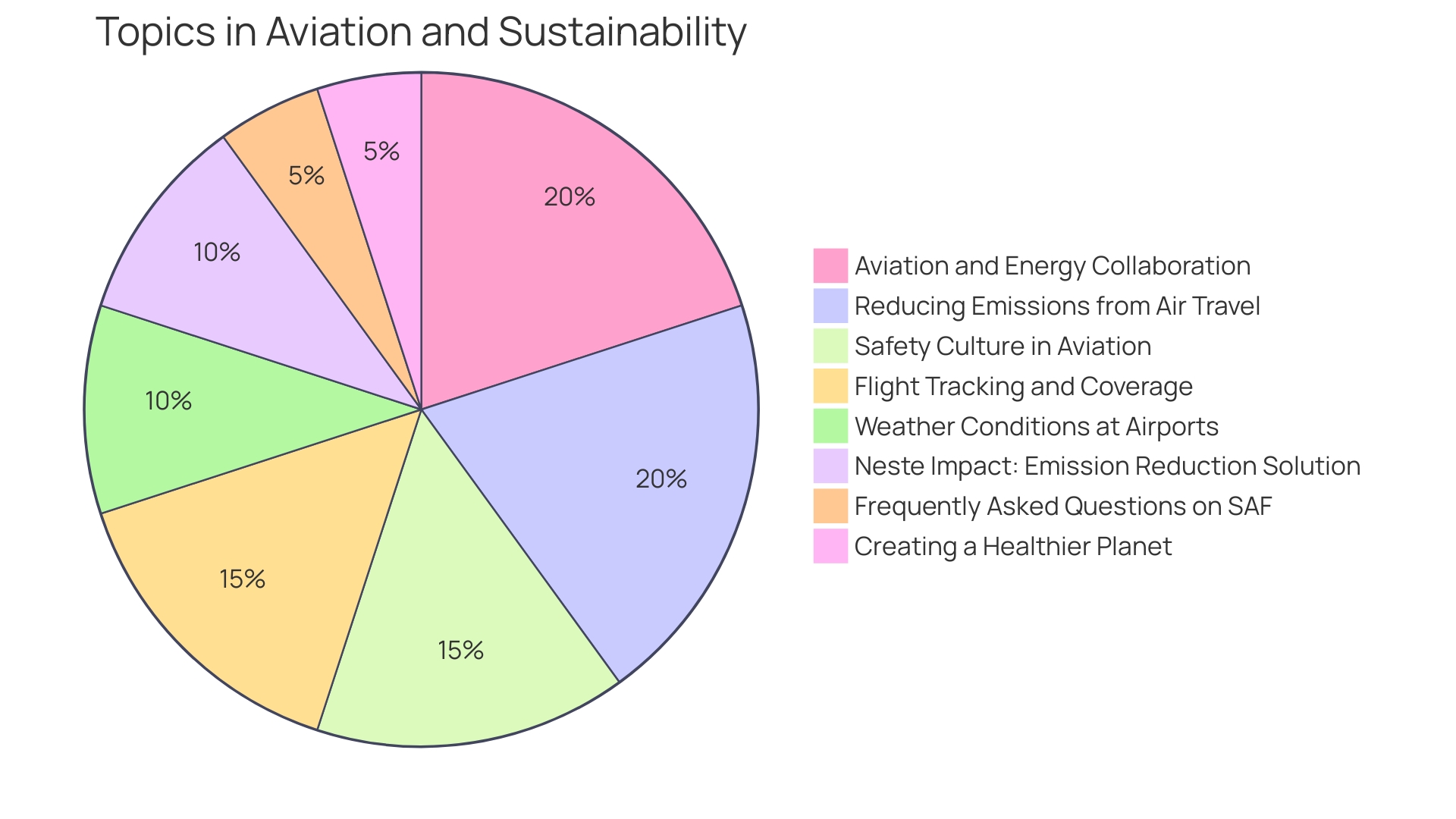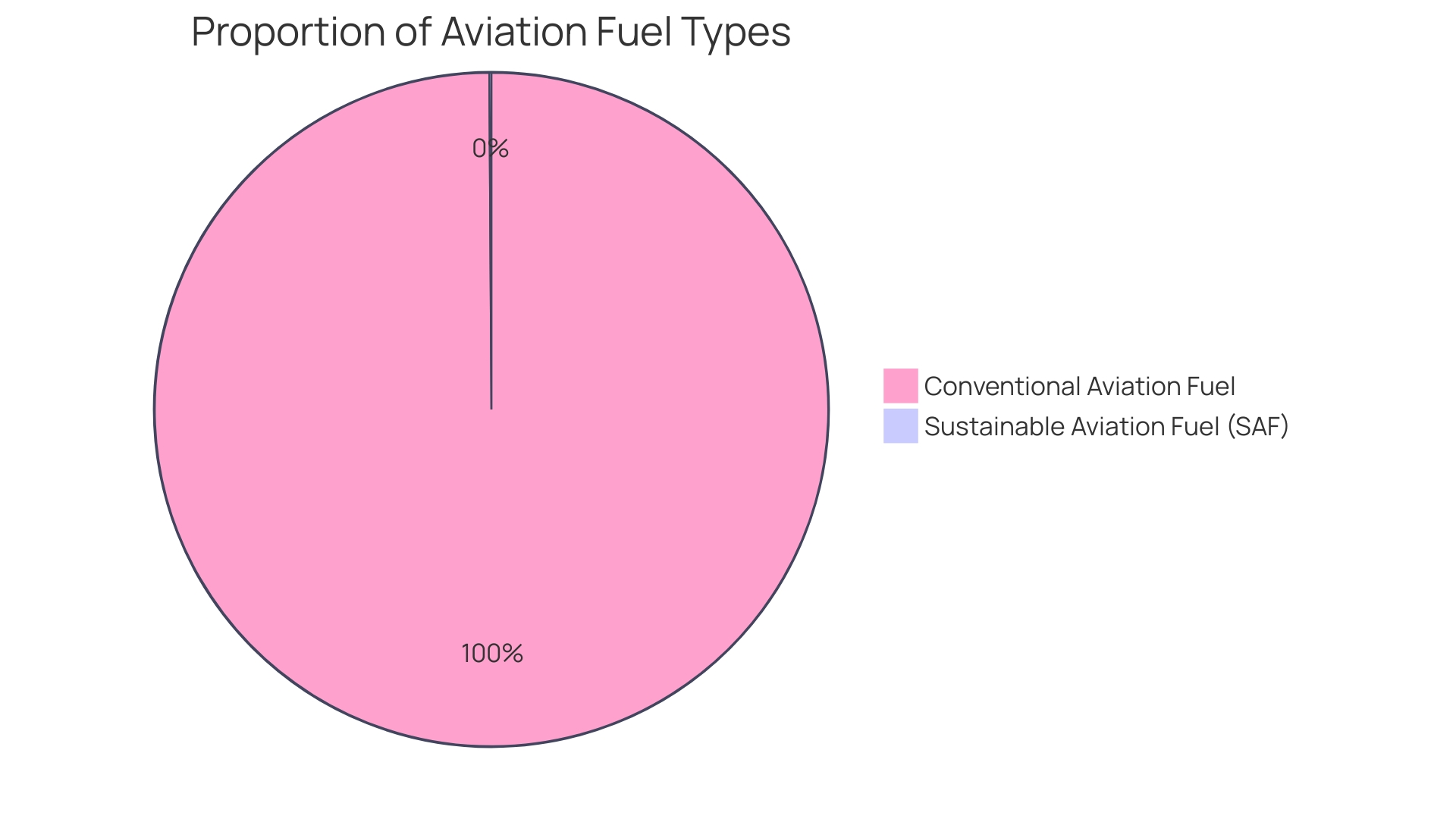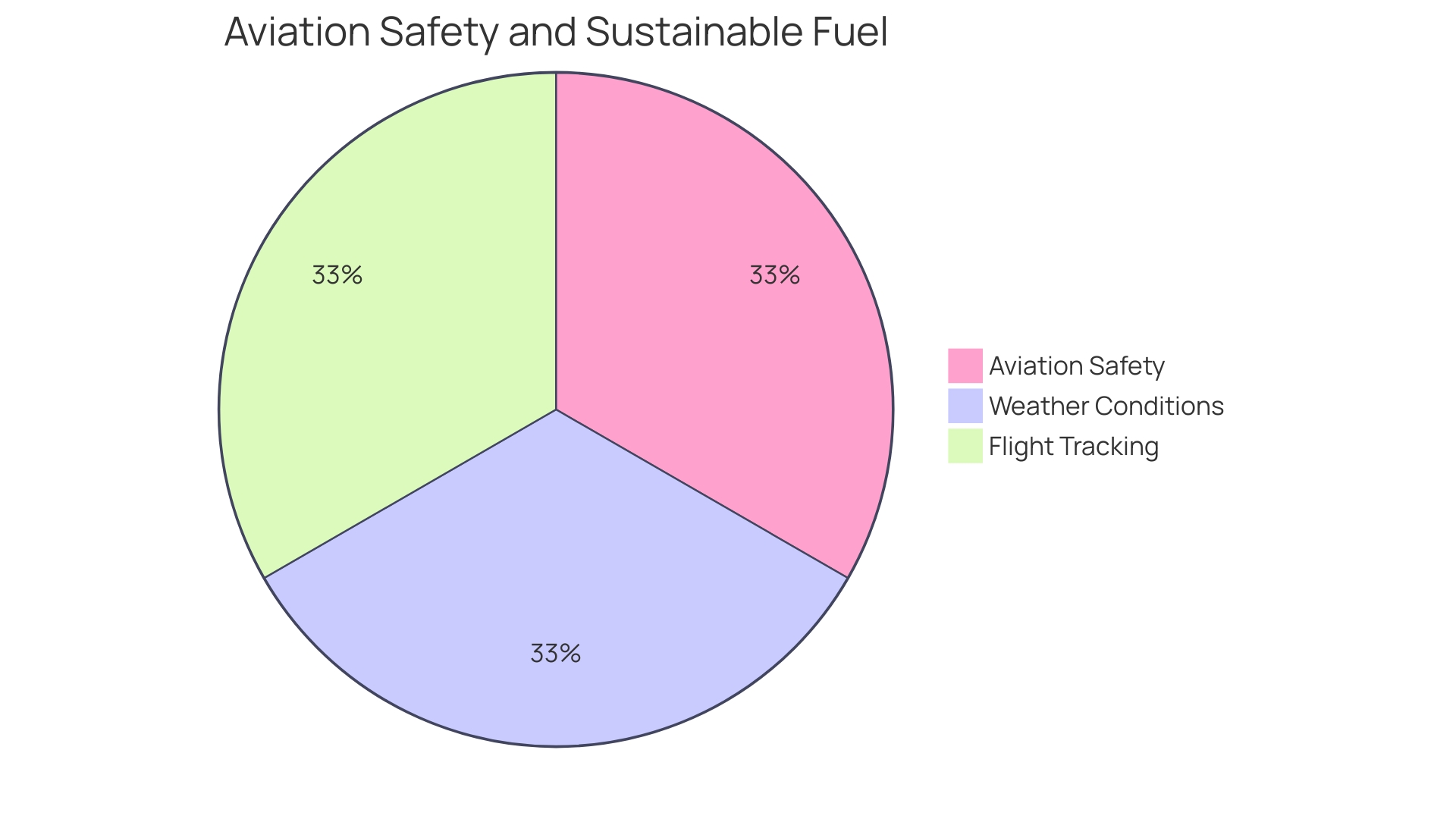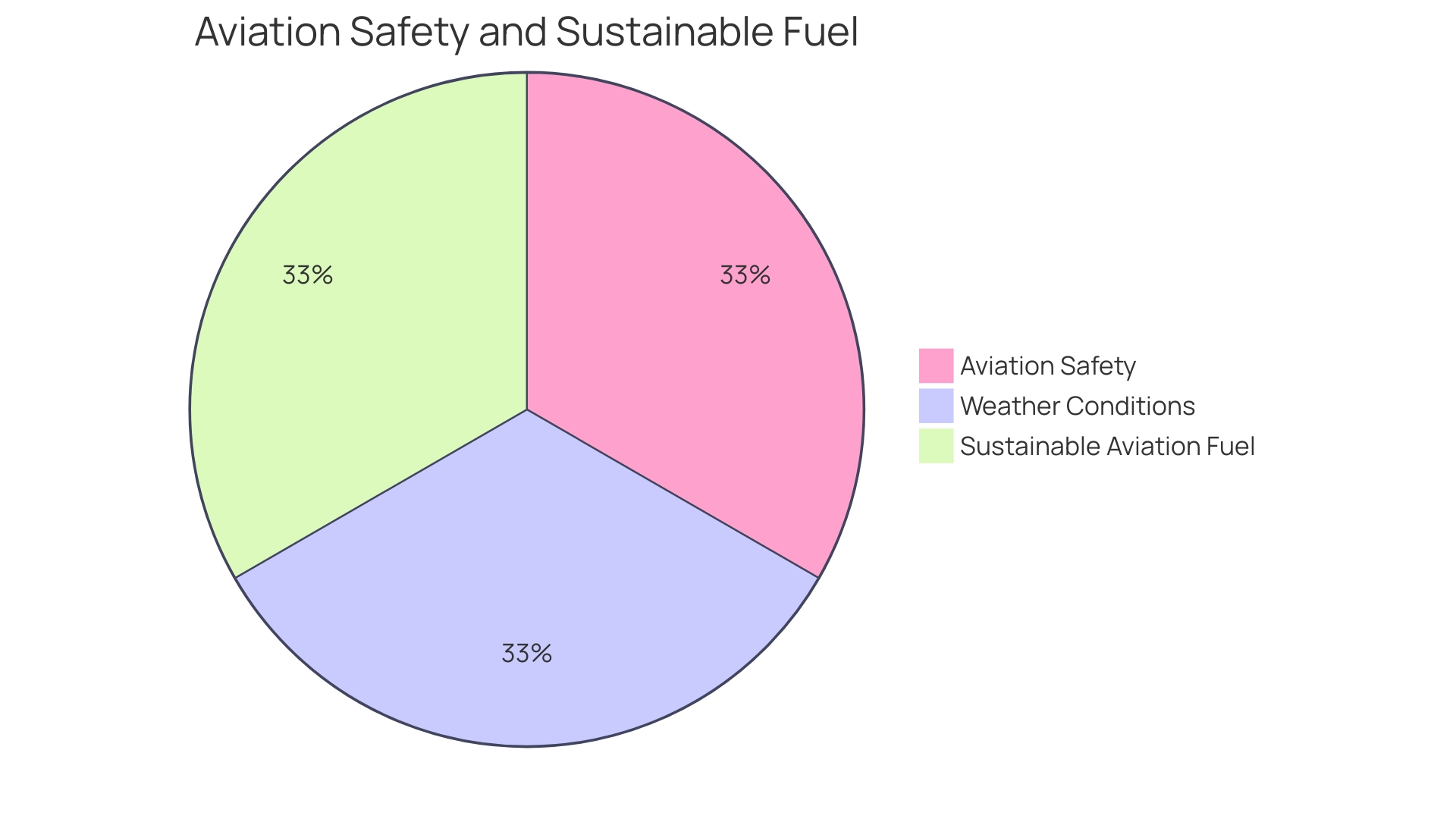Introduction
The renewable aviation fuel industry is experiencing unprecedented growth and momentum as the global push for decarbonization gains traction. Sustainable Aviation Fuels (SAFs) are emerging as the prime alternative to fossil fuels in the aviation sector, presenting a viable solution to reduce carbon emissions. The current surge in the renewable aviation fuel market is driven by increasing demand across various transport sectors, with road transport leading the way.
However, the aviation sector shows significant growth potential, particularly in Europe, where countries like France, UK, Germany, and Poland are driving the biofuel market forward through policies and initiatives. Collaboration and the implementation of key financial and policy actions are crucial to scaling SAFs, with companies like Aemetis Inc., Alder Fuels, and BP plc competing to deliver high-performance, low-emission solutions. While milestones have been achieved, such as a plane flying across the Atlantic powered by alternative fuels, there is a significant gap between current SAF production and the industry's fuel needs that must be bridged.
The US aviation sector, responsible for 7% of the country's transportation emissions, plays a pivotal role in the transition towards renewable fuels. With renewable energy sources like green hydrogen on the rise and a growing emphasis on Environmental, Social, and Governance (ESG) considerations, the future of the renewable aviation fuel industry looks promising. Stakeholders must harness the momentum and leverage policy interventions and technological innovations to scale SAF production and meet the industry's burgeoning demand.
Current Market Size and Growth Projections
Fuelled by the global push for decarbonization, the renewable aviation fuel market is not only expanding—it's taking off with unprecedented momentum. The current surge in this market is largely attributed to Sustainable Aviation Fuels (SAFs), which are now recognized as the prime alternative to fossil fuels in long-distance, wide-body aircraft. With the aviation sector being a significant contributor to worldwide carbon emissions, SAFs present a viable solution to this challenge.
The growth of the renewable aviation fuel market is underpinned by increasing demand across various transport sectors, with road transport leading due to established markets for biodiesel and bioethanol. Nevertheless, the less mature aviation sector shows considerable growth potential, which hinges on government interventions and technological advancements.
Europe is a particularly noteworthy region in this landscape, with countries like France, UK, Germany, and Poland driving the biofuel market forward through policies and initiatives that encourage the use of ethanol, biodiesel, and renewable diesel. This proactive stance has positioned Europe as the fastest-growing region in the biofuel market.
Insights from a comprehensive report, encompassing viewpoints from the aviation and energy sectors as well as the public sector, highlight the importance of collaboration and the implementation of key financial and policy actions to foster an environment conducive to scaling Safe. This involves identifying optimal production hubs and overcoming current barriers to enhance both cost efficiency and supply.
In the marketplace, companies like Aemetis Inc., Alder Fuels, and BP plc are innovating to meet the sustainability goals of the aviation industry. They're offering high-performance, low-emission SAF solutions that adhere to rigorous industry standards. The spirited competition within this sector is propelling companies to deliver eco-friendly solutions that simultaneously reduce greenhouse gas emissions and address the growing demand for cleaner energy.
A notable milestone was achieved when a plane flew across the Atlantic powered by alternative fuels, signaling the industry's commitment to achieving carbon neutrality by 2050. However, the current SAF production is minuscule compared to the industry's fuel needs, a gap that must be bridged to realize these ambitious goals.
The US aviation sector, which is responsible for 7% of the country's transportation emissions, is pivotal to the transition towards renewable fuels. Given the long operational lifespan of commercial aircraft, the immediate use of SAFs emerges as the most feasible path to decarbonization, especially since the electrification of aircraft capable of long-haul flights remains an uncertain prospect.
With renewable energy sources such as green hydrogen on the rise, and a growing emphasis on Environmental, Social, and Governance (ESG) considerations, the trajectory for the renewable aviation fuel industry is clear: skyward. Stakeholders must now harness the momentum, leveraging policy levers and technological innovations to scale SAF production and meet the industry's burgeoning demand.

Key Drivers of the Renewable Aviation Fuel Market
A confluence of factors is propelling the aviation industry towards a greener future, with Sustainable Aviation Fuel (SAF) at its core. The imperative to mitigate aviation's environmental impact has never been clearer. Regulatory bodies are tightening the reins; for instance, the EU's 'Fit for 55' package, and subsequent ReFuelEU Aviation initiative, mandates a substantial reduction in net greenhouse gas emissions by 2030, with full climate neutrality targeted by 2050. These regulations are not only guidelines but will become actionable as early as 2024, underscoring the urgency for airlines to adopt cleaner fuels.
The aviation sector's commitment to a net-zero carbon future is evident, with leading airlines like Delta Air Lines aiming to supplant 10% of their jet fuel with SAF by the end of the decade. Saf's appeal lies in its compatibility with current aviation infrastructure, allowing a seamless transition from traditional fuels. Produced from renewable waste, such as used cooking oils, SAF can slash carbon emissions by over 80%, marking a significant stride in aviation's decarbonization journey.
Education and awareness play pivotal roles in fostering acceptance and demand for SAF. Misconceptions linger; some consumers whimsically associate SAF with the aroma of French fries due to its cooking oil origins. However, the narrative is shifting as more people understand Saf's role in enabling sustainable travel and its immediate availability as a drop-in fuel solution.
To achieve economies of scale, collaboration and innovation are essential. Industry reports highlight the need for joint efforts among aviation and energy stakeholders, leveraging financial incentives and policy frameworks to bolster SAF production. With aviation fuel emissions projected to peak within the decade, the adoption of SAF is not just a matter of environmental responsibility but also a strategic imperative for airlines navigating an increasingly carbon-conscious market landscape.
Technologies and Processes in Renewable Aviation Fuel
Renewable aviation fuel, known as sustainable aviation fuel (SAF), is gaining traction as a pivotal element in the aviation industry's shift towards environmentally friendly operations. The production of SAF is a sophisticated process that harnesses various conversion pathways, notably the Hydroprocessed Esters and Fatty Acids (HEFA) and the Fischer-Tropsch (FT) methods. These technologies are integral in transforming organic feedstocks into high-quality fuels that can reduce the carbon footprint of air travel.
The HEFA process, for instance, utilizes fats, oils, and greases to produce renewable jet fuel that is chemically similar to its petroleum-based counterpart, ensuring compatibility with existing aircraft engines and infrastructure. Similarly, the FT synthesis involves a catalytic chemical reaction that converts carbon monoxide and hydrogen into liquid hydrocarbons, paving the way for the production of synthetic paraffinic kerosene (SPK).
Despite the advancements in technology, the expansion of SAF production to meet the surging demand for greener aviation alternatives is not without its challenges. A recent report highlights the critical technologies and underscores the limitations and barriers that currently hinder the scalability of SAF. It emphasizes the need for collaborative efforts among stakeholders in the aviation, energy sectors, and public sector across key regions—Europe, the US, and the Middle East—to overcome these hurdles.
One example comes from Germany, where a consortium of energy and aviation companies has embarked on an initiative to establish production capacities for eSAF, a form of SAF based on green hydrogen. This initiative not only supports the decarbonization of aviation but also positions Germany as a hub for innovative technologies and a leader in the development of sustainable fuels.
Furthermore, the importance of SAF is underscored by the fact that air travel, particularly in affluent countries, represents a significant portion of individual carbon footprints. For example, a round trip flight from New York City to London emits approximately 1000 kilograms of carbon dioxide.
The industry is also witnessing pioneering partnerships, such as Airbus's collaboration with Neste, aimed at significantly reducing aviation emissions. These alliances are essential in driving forward the adoption of SAF and achieving the airline industry's ambitious goal to reach net-zero carbon emissions by 2050. In the interim, SAF provides the most viable alternative to fossil fuels for aircraft, as the development of electrically powered commercial jets remains a challenge due to the current limitations of battery technology.
Fuel Types and Their Market Shares
Renewable aviation fuels are pivotal in the aviation industry's quest to decarbonize and address its environmental impact. Among these, Sustainable Aviation Fuel (SAF) stands out for its potential to significantly reduce emissions. SAF is produced from renewable resources such as waste oils and agricultural residues, and it's gaining attention not just for its environmental benefits but for its compatibility with existing aircraft engines. Unfortunately, SAF currently powers only 0.1% of flights, highlighting the need for increased production and usage.
The aviation sector contributes about 3.5 percent to human-induced climate effects, with CO2 emissions from aircraft being a major concern. Efforts like the 'Fit for 55' package by the EU aim to slash greenhouse gas emissions, mandating the use of renewable fuels in aviation. With the recent provisional political agreement to decarbonize aviation through the ReFuelEU Aviation initiative, the industry is poised for a transformative shift towards greener fuels from 2024 onward.
The synthesis and application of SAF are not without challenges. The process of turning renewable resources into jet fuel requires significant energy and technological input. Moreover, the production of SAF must be scaled to meet the growing demand for air travel while remaining cost-effective. Despite these hurdles, partnerships like that of Airbus and Neste signal the industry's commitment to innovation and sustainability. These collaborations are essential in making the widespread use of SAF a reality, thereby enabling the aviation industry to progress towards its net-zero carbon emissions goal.
As the industry navigates through these challenges, education plays a critical role. Dispelling myths and raising awareness about the capabilities of SAF—beyond its amusing anecdote of sometimes smelling like French fries due to its cooking oil origins—is essential. It's about enabling consumers and stakeholders to grasp the broader significance of SAF in achieving a sustainable travel future.
In conclusion, renewable aviation fuels, especially SAF, are at the forefront of the aviation industry's sustainability journey. With regulatory support, continued research, and public education, the integration of renewable fuels into the market is set to expand, ushering in an era of cleaner, more responsible air travel.

Regional Outlook and Market Segmentation
As the aviation industry accelerates its journey towards decarbonization, the landscape for renewable aviation fuels is rapidly evolving, with Europe emerging as a leading force. France, the UK, Germany, and Poland are spearheading this green transition, propelled by a robust market for ethanol, biodiesel, and renewable diesel. The European Union's ambitious 'Fit for 55' package, unveiled on 14 July 2021, serves as a testament to this commitment, targeting a net greenhouse gas emissions reduction of at least 55% by 2030 from 1990 levels, and setting a course for climate neutrality by 2050.
A landmark moment arrived on 25 April 2023, when the Council and the European Parliament achieved a provisional political agreement on the ReFuelEU Aviation initiative—a framework designed to ensure a level playing field for sustainable air transport. This initiative, slated to take effect from 1 January 2024, with key articles activating on 1 January 2025, is a crucial component of the 'Fit for 55' package.
The collaborative efforts in Germany further underscore the region's dedication to sustainable aviation. An example is the agreement forged at the National Aviation Conference that aims to establish eSAF production capacities in East Germany, leveraging green hydrogen. This initiative not only emphasizes Germany's pivotal role in the aviation sector but also highlights its innovative spirit in developing technologies that can curb CO2 emissions and facilitate climate-neutral aviation by the mid-21st century.
Despite these advancements, challenges remain. As noted by experts, not all sustainable aviation fuels live up to their name—some may inadvertently drive deforestation or fail to significantly reduce emissions. Therefore, identifying truly sustainable solutions is critical, with potential sources ranging from used cooking oil and forestry residues to synthetic e-fuels produced from renewable electricity, water, and CO2.
The global narrative is clear: to achieve a safe and stable future, cleaner aviation is non-negotiable. With the right incentives, the ingenuity of innovators and entrepreneurs is poised to address these challenges. As the industry moves forward, Europe leads by example, setting the pace for the global renewable aviation fuel market and demonstrating that concerted policy and innovation can indeed yield sustainable progress.
Regulatory Support and Environmental Impact
Governments and aviation authorities worldwide are acknowledging the critical role of sustainable aviation fuel (SAF) in reducing the industry's carbon footprint. Their support is manifested in various regulatory frameworks and incentives aimed at fostering the adoption of SAF. For instance, the European Union's ReFuelEU Aviation initiative, part of the ambitious 'Fit for 55' package, exemplifies regulatory efforts to decarbonize aviation. With provisions coming into effect by January 2025, this regulation seeks to reduce net greenhouse gas emissions by at least 55% by 2030 from 1990 levels, targeting climate neutrality by 2050.
The environmental benefits of SAF over conventional jet fuel are significant, particularly its capacity to diminish greenhouse gas emissions. A shining example is Delta Air Lines' commitment to replace 10% of their annual 4 billion gallons of jet fuel with SAF by 2030. SAF, derived from renewable waste and residue materials, such as used cooking oils, can be a drop-in solution, seamlessly integrating into existing infrastructure and aircraft engines.
Educating consumers about SAF is also crucial, as many remain unaware of its benefits. Initiatives like Neste Impact and partnerships like Airbus' collaboration with Neste aim to make sustainability goals achievable and increase public knowledge about Saf's role in a more sustainable travel experience. As the aviation sector strives towards net-zero emissions by 2050, with approximately 90% of the industry's carbon emissions stemming from jet fuel, SAF emerges as a pivotal tool for greener skies. Moreover, recent milestones, such as the transatlantic flight powered by fat and sugar, showcase the innovative potential of SAF to revolutionize aviation fuel sources.
The challenges, however, are not to be underestimated. Issues such as indirect land-use change emissions and the long lifespan of commercial aircraft underscore the need for a multifaceted approach to decarbonization, involving policy support, industry partnerships, and ongoing research and education. As policies evolve and stakeholders collaborate, the aviation industry inches closer to a sustainable future, propelled by the promise of SAF.

Challenges and Opportunities in the Market
The renewable aviation fuel sector, spearheaded by Sustainable Aviation Fuels (SAF), is at a pivotal juncture where challenges and opportunities intersect. Key barriers impeding progress include limited feedstock sources, elevated production expenditures, and infrastructural constraints. Yet, the industry is witnessing a surge in strategic collaborations and technological innovations aimed at surmounting these hurdles.
Educating the public is vital for dispelling myths and enhancing awareness of Saf's role in sustainable travel. With SAF derived from diverse renewable resources, including used cooking oil, the potential for this industry to contribute significantly to achieving net-zero emissions is substantial.
In the United States, the aviation sector is a major contributor to transportation emissions, with a growth trajectory that implies increasing emissions. Considering the longevity of commercial aircraft, advancements in aircraft design and potential electrification are not immediate solutions for decarbonization. This underscores the importance of SAF as the most feasible interim solution to reduce carbon emissions.
Innovative partnerships, such as the collaboration between Airbus and Neste, epitomize the concerted efforts to address climate change. These partnerships are not only a testament to the industry's commitment but also serve as a beacon for achieving sustainability targets and making a tangible impact.
Statistics underscore the aviation industry's environmental footprint, with aviation CO2 emissions potentially consuming a quarter of the CO2 budget to limit global warming to 1.5°C by 2050. This calls for a swift and decisive pivot towards SAF to mitigate non-CO2 factors, such as nitrogen oxides and contrails, which also contribute to climate change.
The industry is responding to these imperatives with dynamic market trends and global efforts. Companies like Alder Fuels and Aemetis Inc. are at the forefront, innovating to produce high-quality, low-emission SAF that aligns with stringent industry standards. Global energy corporations like BP are diversifying their portfolios to include renewable energy solutions, mirroring the shift towards a low-carbon future.
Quotes from industry experts reflect the transformative potential of SAF, with historical milestones like transatlantic flights powered by unconventional fuel sources. These narratives not only inspire but also highlight the urgency to develop and scale SAF to meet the airline industry's fuel demands and the overarching goal of carbon neutrality by 2050.
In conclusion, the path to scaling SAF requires a multifaceted approach, encompassing consumer education, strategic partnerships, technological innovation, and supportive policies. As the industry navigates these challenges, the opportunities for growth and sustainability in renewable aviation fuels become increasingly apparent and attainable.

Key Players and Innovations in the Industry
Within the renewable aviation fuel landscape, significant strides are being made by industry leaders to forge a path toward sustainable air travel. Chief Sustainability Officer at Delta Air Lines, Amelia DeLuca, asserts that with jet fuel accounting for nearly 90% of the aviation industry's carbon emissions, the focus must shift to sustainable aviation fuel (SAF)—a renewable alternative crafted from waste and residue raw materials. DeLuca's ambition is to replace 10% of Delta's annual fuel consumption with SAF by 2030 while concurrently reducing total fuel usage through efficiency measures.
In the quest to decarbonize, Delta is not alone. Airbus's partnership with Neste, a renewable products manufacturer, exemplifies the collaborative efforts required to tackle global warming and climate change. Through initiatives like Neste Impact, companies are enabled to meet sustainability targets and contribute directly to emission reductions.
The innovations in this sector are not just about partnerships but also about groundbreaking advancements in technology. Companies such as Alder Fuels are pioneering SAF production using patented technology, while BP plc's diverse energy portfolio underscores a commitment to a low-carbon future.
On the regulatory and infrastructure front, a consortium of energy and aviation firms has signed an agreement to explore the production capacities for eSAF in East Germany. This coalition aims to establish a facility by 2030 that will significantly cut CO2 emissions and bolster Germany's position as a hub of aviation innovation.
The expertise driving these developments is drawn from seasoned professionals across the energy spectrum. Tom, with over three decades of experience, and Rice, with a wealth of knowledge in renewable energy policy and carbon capture, are just two examples of the minds propelling the industry forward.
The transformative journey of the aviation sector is also being chronicled by thought leaders who underscore the importance of education in debunking misconceptions around SAF. As sustainable fuels gain traction, the education of consumers on their benefits and role in net-zero transitions becomes paramount.
With the industry's commitment to a net-zero carbon emissions future by 2050, and with SAF poised to play a critical role in this evolution, the unfolding narrative of renewable aviation fuels is one of innovation, collaboration, and a steadfast resolve to ensure a greener planet for future generations.
Future Outlook and Global Initiatives
Steering towards a greener horizon, the renewable aviation fuel industry is poised for significant growth, bolstered by an array of global initiatives and partnerships dedicated to advancing sustainable aviation fuels (SAF). International organizations, along with government policies and industry collaborations, are the keystones in crafting the trajectory for a more sustainable aviation sector.
Fuelled by the urgent need to decarbonize, airline giants such as Delta Air Lines are spearheading the transition to SAF. With jet fuel accounting for the lion's share of the industry's carbon emissions, Delta's commitment to substitute 10% of its annual 4 billion gallons of jet fuel with SAF by 2030, and simultaneously reducing fuel usage, sets a bold precedent. SAF, derived from renewable waste and residues like used cooking oils, offers a drop-in solution compatible with current aircraft engines, making it an accessible choice today.
Europe is also taking center stage, with major economies like France, the UK, Germany, and Poland driving the biofuel market through ethanol, biodiesel, and renewable diesel. The region is expected to lead the growth in the biofuel market, propelled by proactive policies and initiatives from the European Union.
Amidst these developments, education plays a pivotal role in debunking myths and raising awareness about SAF. As Amelia DeLuca, Delta's Chief Sustainability Officer, remarks, educating consumers is crucial for the industry to pivot towards net zero, emphasizing Saf's role in enabling sustainable travel.
In the news, ambitious projects such as Germany's eSAF initiative spotlight the nation's leadership in innovative technology and its commitment to slashing aviation CO2 emissions. This forward-thinking project aims to establish a production facility for eSAF, with a strategic location in East Germany to serve key airports efficiently.
The industry's pursuit of SAF is echoed by insights from stakeholders across aviation and energy sectors, who emphasize the importance of collaboration and policy support to scale SAF. The demand for sustainable fuels is projected to soar, with road transport currently leading, yet aviation's contribution to decarbonization hinges on governmental actions and technological advancements.
To further solidify this path, companies are turning to solutions like Neste Impact, enabling them to meet sustainability goals and make credible claims about their emission reductions. This approach, alongside partnerships like Airbus and Neste, underscores the collective effort required to transform aviation into a more sustainable practice.
As the global aviation sector embarks on this transformative journey, the integration of SAF emerges not just as an alternative, but as the quintessential solution for a climate-neutral future.
Conclusion
The renewable aviation fuel industry is experiencing unprecedented growth as the global push for decarbonization gains momentum. Sustainable Aviation Fuels (SAFs) are emerging as the prime alternative to fossil fuels in aviation, offering a viable solution to reduce carbon emissions. Collaboration, financial support, and policy interventions are crucial to scaling SAF production and meeting the industry's demand.
Europe, with countries like France, UK, Germany, and Poland, is driving the biofuel market forward through proactive policies and initiatives. SAF's compatibility with current aviation infrastructure allows for a seamless transition from traditional fuels. Technologies like HEFA and FT methods are transforming organic feedstocks into high-quality fuels, but scaling SAF production remains a challenge.
Despite SAF's potential to significantly reduce emissions, its current usage powers only a small percentage of flights. Regulatory support and incentives are essential in fostering the adoption of SAF. Governments and aviation authorities worldwide are recognizing the importance of SAF in reducing the industry's carbon footprint.
Educating consumers about the benefits of SAF is crucial for wider acceptance and usage.
The renewable aviation fuel industry faces challenges such as limited feedstock sources, production costs, and infrastructure constraints. However, strategic collaborations, technological innovations, and industry partnerships are driving progress. Thought leaders emphasize the importance of education in dispelling myths and raising awareness about SAF.
In conclusion, scaling SAF production requires collaboration, innovation, education, and supportive policies. The opportunities for growth and sustainability in renewable aviation fuels are becoming increasingly apparent. Europe leads the way in driving the biofuel market, and the integration of SAF is crucial for a sustainable and low-carbon aviation industry.
As the industry strives towards a greener future, SAF offers a promising solution to reduce carbon emissions and meet the growing demand for cleaner energy in aviation.




